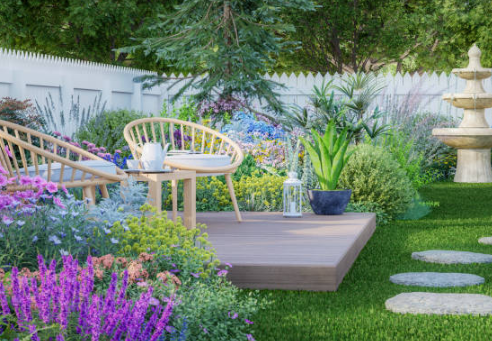There are many ways to enhance your yard, but one of the easiest and most beginner-friendly landscaping ideas is adding garden bed borders.
Edging your garden beds is a great way to give them shape, style, and definition—and it’s also an effective way to keep weeds at bay. Edging materials, like mulch, help separate flower beds from the rest of the yard while blocking the sunlight weeds need to grow. In addition to being functional and visually appealing, garden borders create a clear boundary between beds and lawn, making lawn mowing and maintenance easier and neater.
With all these benefits, you might think edging is difficult—but it’s actually very simple. You can create a clean, polished border in just four easy steps.
When’s the Best Time to Edge Garden Beds?
Technically, you can edge garden beds anytime the ground isn’t frozen. However, most gardeners agree that late spring to early summer is ideal. This timing falls just after peak plant growth and when soil is soft enough to work with easily.

How to Edge Garden Beds to Prevent Weeds
1. Outline the Border
Start by outlining the shape of your garden bed. You can use a shovel or an edging tool.
An edging tool makes clean, curved lines quickly and with less effort. But a shovel is also a perfectly affordable and effective choice.
Here’s how to define your border:
-
With a shovel: Use the tip of the blade to pierce the ground along the edge of your bed. Continue along the shape of the border until the entire outline is complete.
-
With an edging tool: Push the tool into the soil along the garden bed edge, following the shape until you reach the end.
2. Remove the Sod
Once the outline is marked, use a garden spade to dig deeply and remove the grass and roots. This step is key to fully separating the garden bed from the rest of the lawn.
Dig down 4 to 6 inches, and pull the sod back at a 90-degree angle. This sharp angle is important for the next step.
3. Trim the Lawn (Optional but Helpful)
While optional, trimming the lawn edge adds crisp definition and enhances the overall look.
Use hand shears to trim the edge vertically—not horizontally—to maintain that 90-degree cut you created. Follow the border all the way around to give your flower bed a clean, sharp edge.
4. Add Mulch
The final step is applying mulch along the border. Mulch helps block sunlight, preventing weeds from sprouting, while adding color and texture to the bed.
Once you know how much mulch you need, spread a 2–3 inch layer throughout the bed, extending it to the border. The mulch should slope gently down toward the edge, with the top layer level with the surrounding lawn.

